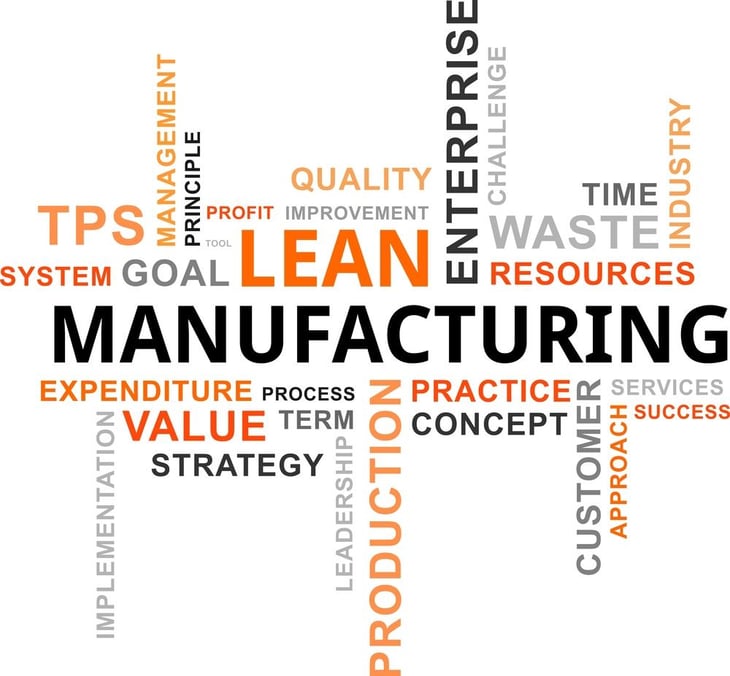
Most people, regardless of the industry they are in, are fearful of two prospects. They are change and staying the same. A paradox of sorts, and confusing to management who have developed a growth mindset.
When presented with the idea of a lean operation, rather than the status quo, most team members, and some members of management, recoil from the notion. They are afraid of the change, yet they are quick to point out the flaws in the current workflow. See, this is the paradox.
In manufacturing, logistics, and warehousing, lean is the way of the current times. Streamlining operations to increase profit margins, increase efficiencies, and enabling the workforce to become more effective makes good business sense. Yet, this business model is rejected by some. Why is this?
Equally important is to look at the benefits of a lean business. So, let’s look into why this idea is rejected by the fixed mindset and is welcomed by the growth mindset. A central focus will be placed on the warehousing aspect, and the principles can certainly be applied to all aspects of a business.
Challenges in a Transition to Lean
The question of why is not answered singularly. What is not debatable is that the friction that occurs with the implementation of lean starts with leadership. Horizontally and vertically, across and down the organizational chart, we are taught to hit targets. How are these targets established? Previous numbers set the benchmark, with a focus on what happened last month, last quarter.
Couple this “looking back” practice with a CEO mentality of control and risk aversion and you have the perfect recipe for lean being tossed in favor of the old standby, batch. The paradox is demonstrated over and over. Rather than a focus ahead, we are taught that the solution is found by looking back in time.
This is not the only reason of course. Most of the attention that lean gets is in its cost cutting. What is overlooked, for whatever reasons, is the improvements in customer service and strategy. Instead of using lean as a way to run a company, CEO’s and management implement some of the lean practices all the while continuing the old batch ways in other areas.
This is a common, and critical, mistake. Lean is a way to operate a business. It changes everything. There is a faction of people who have practiced lean in some areas and confess they have a working knowledge of how it works. The problem is this, they share the tools rather than demonstrate how it revolutionized every aspect of the business. As was previously stated, you take the tools and place them on top of the old system instead of changing everything.
Few companies and/or individuals have fully implemented Lean thoroughly, as most use some of the tools and then toss the rest. They, in fact, did not practice the lean way and therefore did not reap the rewards. Those that try and teach lean that have not fully implemented it in every aspect are misleading those they are carrying the message to, and the message is flawed.
Benefits to Lean
The benefits, in a warehouse environment, of a lean way of doing business far exceed the expectations of those presented with the concept. Before we go any further, it is important to recognize that lean is a simple model. Yes, it is a method of cost reduction. Did you know that it also improves the customer experience? How about the overall strategic vision of the company?
In the manufacturing sector, lean has been present for decades. Only recently has it showed up in warehousing with any prominence. For those companies who have embraced it, the results are self-evident.
Take, as an example, pallets. A necessary element of any distribution center or warehouse, so we think. There are some warehouses that looked at lean with an open mind and decided to switch out their pallets with slip sheets. The results? Less damaged product from broken wooden pallets, increased efficiency and effectiveness in moving product, and of course lower costs.
Are you reluctant to let go of the trusty wooden pallets? Open minded enough to change when you inspect them for damage? Some companies have found that a simple shift to pallet inspection at receiving has saved thousands of dollars in wasted resources and damaged goods.
Picking is an area that warehouses always have room for improvement. By considering mobile workstations, as an example, picking times and accuracy can be expected to improve immensely.
The essence of lean is more is not always best. Quantity does not equal quality. Our customers deserve our best, and if we, as an organization, are unwilling to change with the times all suffer. Decreasing revenues, poor customer service experiences, and strategic losses are the promises of a fixed mindset.
With a growth mindset, which is the essence of lean, revenues will increase, customer experiences will exceed their expectations, and a strategic vision that is durable over the long term will endure.











